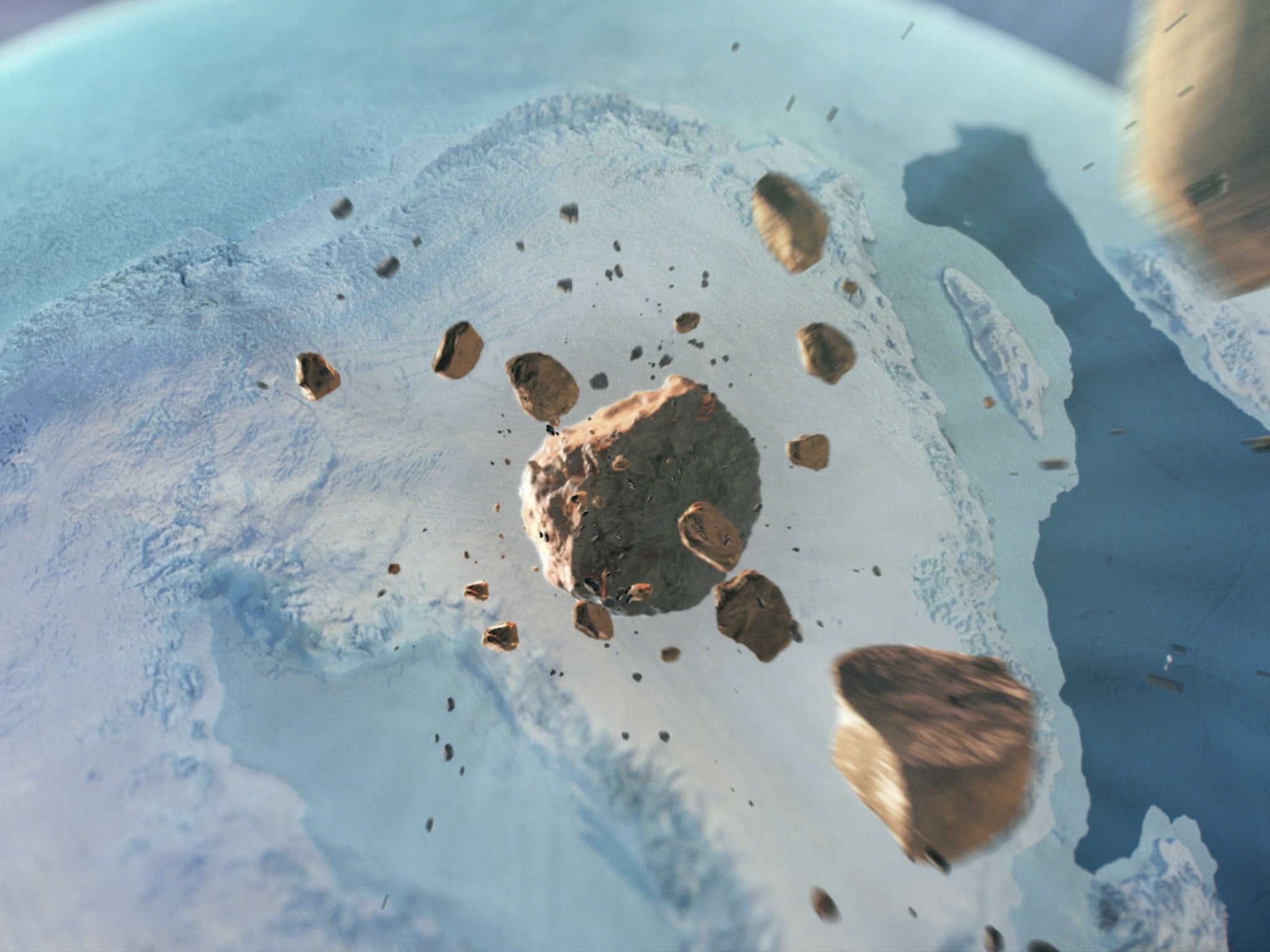Giant meteorite crater bigger than Paris found beneath Greenland’s ice sheet
Impact could have 'drastically altered the climate and led to serious consequences for life on Earth at the time', scientists say

Your support helps us to tell the story
From reproductive rights to climate change to Big Tech, The Independent is on the ground when the story is developing. Whether it's investigating the financials of Elon Musk's pro-Trump PAC or producing our latest documentary, 'The A Word', which shines a light on the American women fighting for reproductive rights, we know how important it is to parse out the facts from the messaging.
At such a critical moment in US history, we need reporters on the ground. Your donation allows us to keep sending journalists to speak to both sides of the story.
The Independent is trusted by Americans across the entire political spectrum. And unlike many other quality news outlets, we choose not to lock Americans out of our reporting and analysis with paywalls. We believe quality journalism should be available to everyone, paid for by those who can afford it.
Your support makes all the difference.A giant crater that was formed when a meteorite smashed into Earth, has been uncovered deep below Greenland’s ice sheets.
The 31-kilometre-wide cavity was discovered by an international team of scientists who believe it was caused by a “rare” meteorite that struck Earth as recently as 12,000 years ago.
Evidence suggests the crater was formed when a kilometre-wide iron meteorite penetrated seven kilometres into the Earth’s crust.
Since then it has been buried under the thick ice of the Hiawatha Glacier in northwest Greenland.
It is the first time ever that an impact crater of any size has been found underneath one of Earth’s continental ice sheets.
Scientists said the impact could have “drastically altered the climate and led to serious consequences for life on Earth at the time”.
The study, led by researchers from the Centre for GeoGenetics at the Natural History Museum of Denmark and University of Copenhagen, was published in the journal Science Advances.

The crater was first discovered in July 2015 when researchers found a previously undetected “circular depression” under the glacier.
The team then inspected the glacier from the air using state-of-the-art ice radar measurements, revealing the hidden crater – covering an area bigger than Paris – in much more detail.
Detailed chemical analysis of sediment from a river that drains straight through the glacier followed, allowing researchers at Cardiff University to determine the type of object capable of causing such monumental destruction.
In particular, the experts looked for signs of platinum, palladium, rhodium and gold that would indicate the presence of a meteorite.
“When the results came through from the chemical analysis, they were certainly unexpected,” explained co-author of the research Dr Iain McDonald, from Cardiff University’s School of Earth and Ocean Sciences. “Initially we thought we might find the signature from a chrondritic or ‘stoney’ meteorite but the only explanation for the pattern of metals that we found had to be a mixture between the crustal rocks in the surrounding area and an unusual iron asteroid,” he said.
A number of iron meteorites, including a 20-tonne fragment, had previously been found in the area not far from the Hiawatha site.
The team said their next task would be to date the impact, which they believe happened between three million and 12,000 years ago.
Dr McDonald added: “Chemically, our samples and the iron meteorite are highly heterogeneous and likely represent different fragments bound together by gravity. Fractionated iron meteorites are rare and finding two such occurrences in close proximity may be more than coincidence.


“While it requires more research, we consider it possible that the Cape York irons may have been outer fragments or even boulders on the surface of the main meteorite. We suspect these initially detached in Earth’s gravity field and then decelerated as they entered the atmosphere to fall south of the Hiawatha crater.”
Professor Kurt H Kjær, lead author of the research from the Natural History Museum of Denmark, said: “The crater is exceptionally well-preserved and that is surprising, because glacier ice is an incredibly efficient erosive agent that would have quickly removed traces of the impact.
“The next step in the investigation will be to confidently date the impact. This will be a challenge because it will probably require recovering material that melted during the impact from the bottom of the structure, but this is crucial if we are to understand how the Hiawatha impact affected life on Earth.”
Join our commenting forum
Join thought-provoking conversations, follow other Independent readers and see their replies
Comments